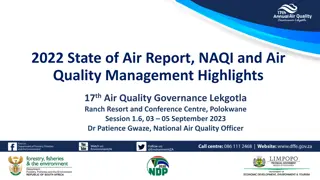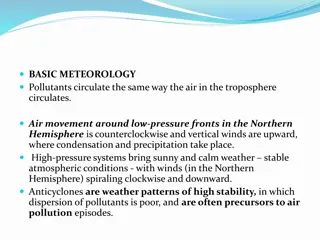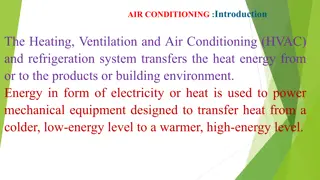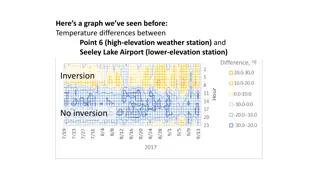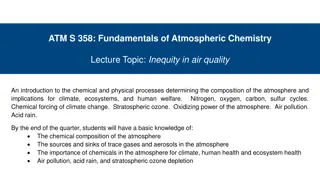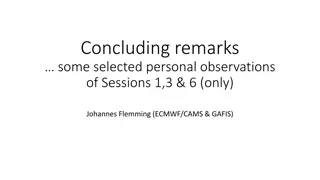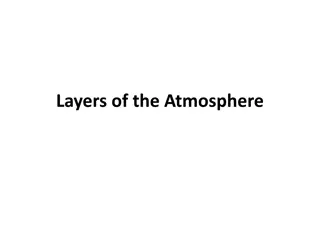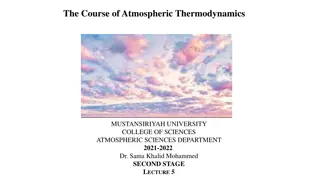Understanding Atmospheric Inversions and Air Quality Impact
Explore the effects of atmospheric inversions on air quality, particularly during wildland fires. Learn about stable and unstable air conditions, how pollutants behave in different scenarios, and where they disperse. Discover the impact of temperature inversions on smoke movement and the importance of monitoring air quality during such conditions.
Download Presentation

Please find below an Image/Link to download the presentation.
The content on the website is provided AS IS for your information and personal use only. It may not be sold, licensed, or shared on other websites without obtaining consent from the author. Download presentation by click this link. If you encounter any issues during the download, it is possible that the publisher has removed the file from their server.
E N D
Presentation Transcript
Hot Cold Cold Hot Cold
Hot Cold Cold Normal Inversion Hot Cold
Normal Atmospheric Condition Air moves up and out from the ground. Air at the ground surface is unstable. unstable.
Normal Atmospheric Condition Air moves up and out from the ground. Air at the ground surface is unstable. unstable. Temperature Inversion Condition Air on the ground is stuck there. It cannot move up and out. Air at the ground surface is stable stable.
What happens to smoke from wildland fires during atmospheric inversions? Temperature Inversion Condition Air on the ground is stuck there. It cannot move up and out. Air at the ground surface is stable stable.
Where do the pollutants go? Where do the pollutants go? Normal Conditions (unstable air at ground surface) Temperature Inversion Conditions (stable air at ground surface) Source: https://www.qld.gov.au/environment/pollution/monitoring/air-monitoring/meteorology-inversions/


